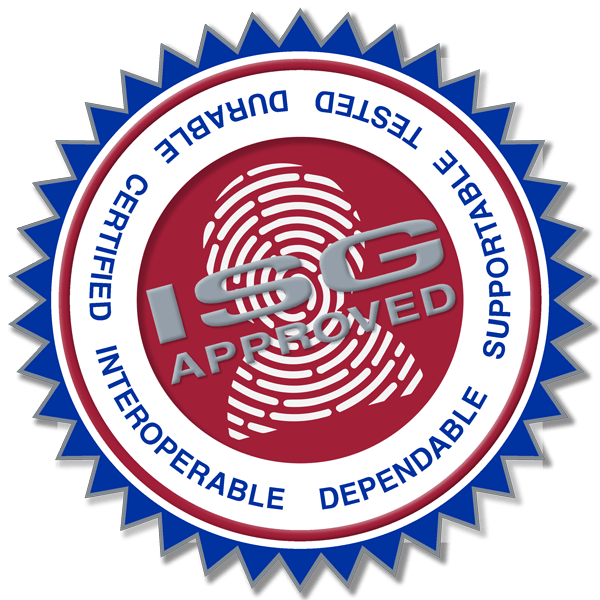Identifying When a Large-Format Credential is Needed
When the topic of card issuance is discussed in the higher education realm, typically we’re talking about the standard CR80 card size – the size of a credit card. We often forget, however, that there are larger format credentials out there that can be used for a myriad of event, ticketing and conference environments.
This begs the questions, then, why would you need a large-format credential? And when does it make sense to issue a larger ID card?
When it comes to the “why,” the answer can be as simple as it provides a more readable identification credential that can easily be seen from a distance. You may, for example, want the larger credentials to be worn by event attendees, or by staff. Which leads us to the “when.” Applications for larger format credentials can include conferences, camps, training sessions, and access to special events like campus sporting events and concerts.
Once you’ve determined that a large-format credential is the way to go, the challenge then becomes how best to produce the larger IDs – preferably in an easy way and without a high expense. Here are some choices and things to consider.
Plastic Card Printers
You may want to issue larger plastic cards if you want the credential to be used more than once, as with a season pass, or if you want it to live on as a keepsake memento. Durability, then, is the main reason to choose plastic credentials.
As for printing those cards, there are a few plastic card printers on the market that accept larger sizes. They range in price from $3,000 to $10,000 and support either direct-to-card, retransfer or ink jet card printing.
Although the printers will handle larger cards, many direct-to-card printers DO NOT print the entire surface of a large-format credential. They are typically restricted to printing normal credit card/ID card size, and the printing will be positioned in the middle of the larger card. The remainder of the credential must be preprinted in this case. This formula would give you the ability to have a larger card, but limits how much and how large the printed info can be. In my opinion, this may not provide what you really need.
Another direct-to-card printer model prints on a credential that is the same height of a standard CR80 card (2.125”), but twice as long (6.57”). This creates a long, skinny credential that isn’t necessarily practical for all use cases.
If retransfer printing is your preference, there is a model that will print on 3.375 x 4.875” cards. It can also print onto the vast majority of the larger card surface. This provides a good size credential. The list price of this printer is about $7,500. It produces about 70 single-sided cards per hour, and with the price of printer supplies included, runs roughly $1.15 per card. To put that in perspective, the cost of the blank larger format plastic cards is about 15 cents each.
The final printing method leverages an ink jet plastic card printer that can prints on 3.5” x 5.5” plastic cards. These are special ink receptive coated cards. The retail price of the printer is pricier, coming in at close to $10,000, and the cost per card for cardstock and ink also will be more than $1.00. However, ink jet plastic card printers operate much faster than direct-to-card or retransfer card printers.
As a general rule, and regardless of the card size you use, the cost of larger format cardstock will be a bit more expensive than the standard CR80 card size, either blank or preprinted. However, the cost per card is lower compared to ribbons or ink.
Ink Jet Credential Printers
A more affordable option, though, may be an ink jet printer that accepts a roll paper card stock. You’d sacrifice the durability of a plastic credential, but would save with a more the cost-effective process.
These kinds of printers are used a lot for producing food or packaging labels. For credentials, though, the paper card would likely be inserted into a clear pouch, and then worn with a lanyard, bead chain or strap clip.
The price of ink jet roll printers start at about $1,300 – much less expensive than plastic card printers. The cost of the ink to print the credentials runs roughly 35 cents per 3.5 x 5.5 per card. As for blank paper card stock rolls, a ballpark cost is 10 cents each for 3.5” x 5.5”, based on an order of 10,000.
The print speed for a $1,300 printer is pretty fast at approximately 450 cards per hour. The total approximate cost per card for card stock and ink is 45 cents, not including a clear pouch or lanyard attachments.
The ink jet printer option provides an outside-the-box alternative to large format IDs, using affordable hardware, printing a larger size, and all at a fairly rapid rate.
Credential “Wearability”
Regardless of the card material or print method chosen, the large-format credential is meant to be displayed and will likely require some kind of wearable ID attachment.
There are hundreds of different attachment options, representing a science unto itself. You probably want the credential to remain facing forward, so that is a consideration in what you select. Below are the common choices with budgetary costs.
Plastic Cards
If you choose plastic cards, you can have them slot punched. Their more durable nature means they don’t require a clear vinyl pouch for protection, but will instead require a strap clip. The cost for a strap clip typically runs only about 15 cents each.
Ink Jet Paper
Less durable than their plastic counterparts, you would insert the paper cardstock into a clear vinyl pouch that costs about 20 cents each. The pouch can then be worn using a strap clip (15 cents), steel bead chain (20 cents), and a blank or custom printed lanyard.
For an added personal touch – and a bit of brand recognition – you can also choose a preprinted lanyard that features your institution’s colors and name. For larger cards or pouches, the lanyard recommendations are either open ended with two swivel hooks – like the NACCU conference badges – or a standard lanyard with wide plastic hook. The cost of these with custom printing included will run around 90 cents each.
ID Software
The good news is you probably can use your current ID software. Check to see if you can create projects of sizes different sizes and if there is a maximum size allowed. Using your current ID software means you are familiar with it, and you will have the ability to import the data or connect to an external database. You don’t want to manually type all the credentials!
Image Capture
Like your normal ID cards, you will want to determine if a photo is needed and how you will capture the photos. Online photo submission is one option. If live capture is required, there are a variety of automated ID cameras that will capture photos from a longer distance and auto crop/center. You need to keep the lines moving!
Badge Size
There are a variety of sizes available. If you choose an ink jet paper card stock, I recommend a 3.5” wide x 5.5” long cardstock. This is a nice, visible credential, but not too large as to be uncomfortable to wear. For plastic cards, I also recommend anything around a 3.5” x 5” size.
Credential Technology
Technology such as proximity or contactless chips can be built into the larger plastic cards. However, with lack of common sizes and limited use in the marketplace, the cost per card will be fairly high. Expect a minimum order and longer lead times. You may need to issue technology credentials if you have event staff that needs door access. The cost may be prohibitive to issue to all attendees.
For most applications, I recommend the use of barcode technology. This allows the barcode to be printed when the credential is being personalized, so there is no real added cost. In addition, handheld barcode scanners are prevalent at most events. I recommend newer, 2D barcodes, such as QR code.
For either plastic or ink jet card stock, an UHF RFID chip/antenna can be added. You might consider this technology if you want to have long a read range, and to read a group of people without them having to present the credential. However, introduction of UHF RFID technology creates other complexities such as how to program the chips and the purchase and installation of appropriate readers.
There’s no shortage of things to consider before making the decision to issue large-format credentials. Printer cost, credential size and cost, cost of ink/ribbons, how to display, cost of pouches and attachments, ID software, database import or connection, print speed, and support availability are all things to keep in mind. In navigating these considerations successfully, however, issuing a large-format credential can be a breeze.
At the end of the day, nothing is going to replace the standard CR80 card size we all know and love. But with virtually every campus putting on special events and issuing season tickets and event passes, it’s important to know all the credential options that are out there.
A good choice to help you navigate these considerations and provide a complete solution quote is your local Identification Systems Group dealer. Or feel free to contact me to discuss your specific requirements. I’ll be glad to help.
Contact us today for more information about the solutions mentioned here.

